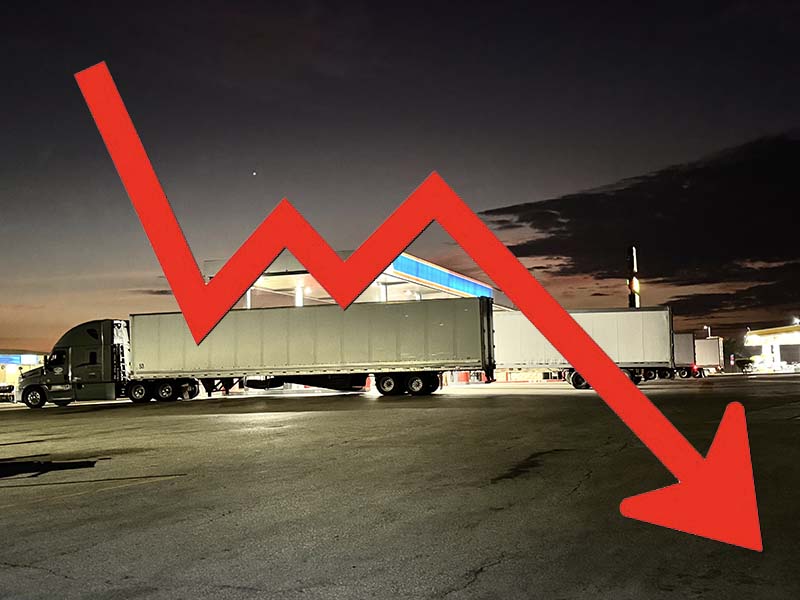It’s been a while since some, if any, positive analysis of freight market conditions was published.
As an upcycle moves farther into the rear view, new tariffs are set to take effect, directly affecting heavy trucks.
“There’s no doubt in my mind that costs will go up,” Jason Miller, a professor in supply chain management at Michigan State University, told Trucking with OOIDA. “Will it be 5%? Will it be 10%? That’s where it’s a little too early to tell.”
The OOIDA Foundation’s October freight market update said demand is rising, capacity is loose, operating costs are increasing and rates are declining. Not exactly a recipe for profitable trucking.
Below is a breakdown by specific market type.
Van market
Demand has increased across all regions, led by a 71% increase in the Midwest. The South Central region also reported a significant increase.
Rates were down in all but one region, with the Southeast region experience the greatest decline.
Flatbed market
All regions saw higher demand, including a 48% increase in the Southeast region.
Rates increased year-over-year for the seventh straight month but dropped even further below the three-year moving average, which is a negative indicator for freight demand.
Reefer market
Carriers in the Northeast and West Coast saw the best demand ratios. The Midwest region experienced the largest decrease.
Most of the regions reported decreased rates.
Trucking market
“While demand trends are mixed and the outlook remains cloudy, capacity continues to contract,” the Cass Shipment Index said. “Lower capacity in an otherwise stable demand environment could move the cycle forward and actually create for-hire demand … But this will take time.”
Strong for-hire entries at the start of the year have cooled rapidly amid growing tariff uncertainty.
Capacity has expanded faster than prices for two consecutive months, according to the Logistics Managers’ Index.
If fuel prices were to rise meaningfully, the pressure on carrier operating costs would intensify, C.H. Robinson said.
Tariffs set to take effect on Nov. 1 are expected to raise new truck prices, delay fleet replacement among large carriers and drive up used truck prices due to tighter inventory.
Freight market
U.S. manufacturing activity contracted at a slightly slower pace, with production growth the biggest factor. However, the combined drop in new orders and inventories rendered the increase in production negligible.
Eleven of the 17 industries reported contraction in September.
The housing market is well below 2019 levels. The same is true for existing single-family homes, which saw year-over-year increases in both inventory levels and median prices. LL
Read the full Foundation freight market update online.

